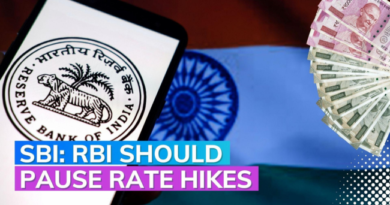How missing the best days in markets impacts your returns

The Indian stock market has demonstrated remarkable resilience over the years, if we look at the historical performance of the BSE Sensex and the Nifty Midcap 100 indexes.
Over the years, the Indian market has witnessed many events like the dotcom bubble, 2009 financial crisis and the 2020 COVID virus induced fall.
Despite experiencing significant intra-year declines, both indices have predominantly ended with positive returns over the long term. This resilience underscores the robustness of the Indian economy and the potential for growth in its equity markets. More importantly, it shows that long term investors who remain focused on their goals eventually end up with positive results.
If you look at the calendar year returns of BSE Sensex for the last 45 years, the index has delivered positive returns in 36 out of 45 years. Even in these positive years, the index experienced intra-year declines ranging from -10% to more than -20%.
For instance, in 1985, the Sensex delivered 94% return despite a -19% drawdown during the year. Similarly, in CY 2020, the index was up 16% despite a significant -38% intra-year decline.
BSE Sensex Return
Intra Year Declines Number of Calendar Years
with Positive Returns
0 to < -10% 4 out of 36
-10% to < -20% 23 out of 36
> -20% 9 out of 36
CY1980-2025 YTD. As of Jan 31, 2025.
In the above table, we can see that even if the Sensex witnessed a decline of up to -10%, in 4 out of 36 years, you would have earned positive returns in those calendar years (Jan 1-Dec 31).
Similarly, in the second instance, even if the intra year decline is in the range of -10% to -20%, in 23 out of 36 years, you earn a positive return. Lastly, even if the decline is more than -20% in any particular year, in 9 out of 36 years, you would have earned a positive return.
If we trace the history, The Nifty Midcap 100 Index of 21 years, the index has delivered positive returns for 15 years, despite intra-year declines often exceeding 10%. For example, in 2009, the index surged by 102% after a 24% drawdown, showcasing the potential for recovery and growth.
Intra Year Declines Number of Calendar Years
with Positive Returns
0 to < -10% 1 out of 15
-10% to < -20% 8 out of 15
> -20% 6 out of 15
CY2004-2025 YTD. As of Jan 31, 2025.
The resilience of the Indian stock market can be attributed to several factors, including the growth of the middle class, government incentives for MSMEs, and supportive liquidity measures by the Reserve Bank of India (RBI). With inflation expected to average 4.20% and GDP growth projected at 6.7% in FY26, the economic outlook remains favourable.
In this context, how should investors navigate their portfolio in the current market?
Should you stop your investments?
Investors should ideally not rush to pause their Systematic Investment Plans (SIPs) because the market is trending lower. In fact, this is very advantage that investors should not miss out on. Investing when Net Asset Values (NAVs) are trending lower helps investors accumulate more units and benefit over the long run.
Any decision to redeem or stop SIPs should be taken in context of your goals. If your goal is near completion, it makes sense to rejig your asset allocation.
While market falls can be unnerving, investors should view intra-year declines as opportunities rather than setbacks. Historical data indicates that the Indian stock market has consistently rewarded those who stay invested through cycles. This reinforces the importance of a long-term investment perspective in navigating market volatility.
Should you time the market?
Timing the market is not an easy job for most sophisticated investors. Systematic Investment Plan (SIP) is designed to overcome this tendency of timing the market by ensuring consistent and disinclined investing. Remembering the old adage – as boring as it may sound serves investors well in the long run – “Time in the market is more important than timing the market.”
Where and how to invest?
Categories like Balanced Advantage Funds and Multi Asset Funds, which are designed to take active asset allocation calls can enable you to tide over the current volatile market with ease.
A golden thumb rule of deciding your equity/debt allocation can be based on the time horizon of the goal. For instance, if your goal is say seven years away, you may consider having a higher allocation to equities, depending on your risk appetite.
When to rejig your asset allocation?
If you are closer to achieving your goal, it is wise to start shifting your allocation towards debt to protect your corpus from the volatility of markets.
Leveraging the above discussed strategies and taking the help of a trusted advisor can empower you to make confident and informed decisions about your investment portfolio.
Authored By:
Abhishek Tiwari
ED & Chief Business Officer
PGIM India Asset Management Pvt. Ltd.




